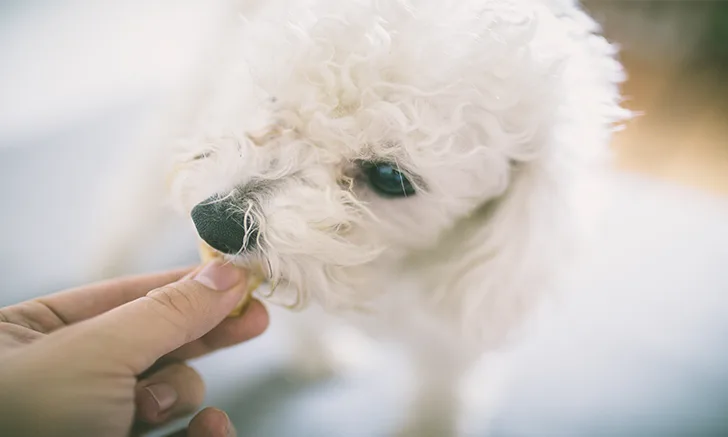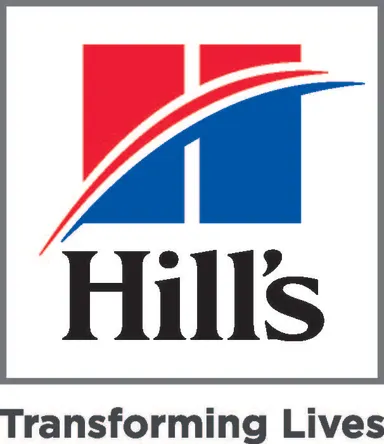Postsurgical Care Protocol
Jennifer Kasten, DVM

Sponsored by Hill’s Pet Nutrition
Let’s use Rose, a 6-month-old bichon frise, as a hypothetical case to demonstrate a pet’s experience eating a food, integrated in the postsurgical protocol, that supports digestive care as part of its recovery from surgery. In this example, Rose was presented for a routine ovariohysterectomy.
History
The owners acquired Rose at 8 weeks of age. On examination, the puppy was healthy, free of parasites, and current on vaccinations. Surgery went as planned without complication.
From Recovery to Discharge
Even the most routine cases have special needs in the days after surgery. Although pain management and wound care might more immediately command the attention of practitioners, a patient’s nutritional needs and owner follow-up should not be overlooked. Recommended length of postsurgical feeding is 7 days. It is important for early nutritional support to provide energy and protein to promote recovery.1
Rose recovered unremarkably from anesthesia. Four hours after extubation, she was offered a few bites of Hill’s® Prescription Diet® i/d® canned food, which she tolerated well. A veterinary technician discharged Rose to her owners later in the day with a detailed postsurgical care and nutrition protocol. As part of the routine patient discharge protocol, the office staff handed a Get Well Soon card with nutrition discharge instructions to the client recommending Prescription Diet® i/d® food.
Client Discharge Instructions*
Feeding instructions based on the dogs body weight
Evening of surgery: Feed small meal
1-5 days post-surgery: Feed half of Prescription Diet® i/d® can in morning and evening
6-7 days post-surgery: Gradually reintroduce current food for this pet by mixing with Prescription Diet® i/d® food
8 days post-surgery: Resume normal ration
Leash walks only, for elimination purposes, only, until suture removal
Keep Elizabethan collar in place until suture removal
Give pain medication as directed
Schedule recheck examination now for suture removal in 10-14 days
*See insert for a convenient postsurgical feeding protocol tool
Nutritional Attributes that Support Postsurgical Recovery
Highly digestible formula: Helps patients absorb nutrients necessary for recovery
Prebiotic fiber: Feeds beneficial gut bacteria, which may be compromised by medication
Complete & balanced nutrition: Suitable for puppies and adult dogs
From Discharge to Recheck
Follow-up telephone correspondence 24 hours after discharge indicated Rose was doing well. The owner reported the puppy seemed comfortable, ate her morning meal, and had no signs of nausea or gastrointestinal upset. As instructed by the discharging technician, the owner had been providing the puppy with pain medication. The owner indicated the incision was somewhat red but not swollen. The only concern was that Rose seemed frustrated with the Elizabethan collar.
Rose was presented for suture removal 10 days after discharge. The incision had healed, and sutures were removed without incident. The owner thanked the veterinarian for the Get Well Soon card.
Tips for Success Introducing Nutritional Support into a Postsurgical Protocol
Engage client in nutrition conversation at patient drop-off:
Ask “What are you going to feed your pet tonight?”
Provide written and verbal postsurgical care instructions (see Client Discharge Instructions)*
Improve owner understanding and compliance
Ensure clear instructions are included for pain control and nutritional support
Dispense an adequate number of Prescription Diet® i/d® cans for 7 days at time of discharge; use 6-can Prescription Diet® i/d® food carriers or dispense full-can cases
Use follow-up phone calls
Check patient status, including appetite and food tolerance, within 24 hours of discharge
Address owner concerns
Mail or hand over the Get Well Soon card to demonstrate compassionate care
“All of my routine elective surgical patients are discharged with an adequate supply of Hill’s® Prescription Diet® i/d® canned food. … … Pets do well with the protocol. Owners are very satisfied. My staff fields fewer phone calls from concerned owners, increasing our practice efficiency.”—Dr. Mark Sprayberry of Olive Branch Pet Hospital (Pensacola, Florida)
